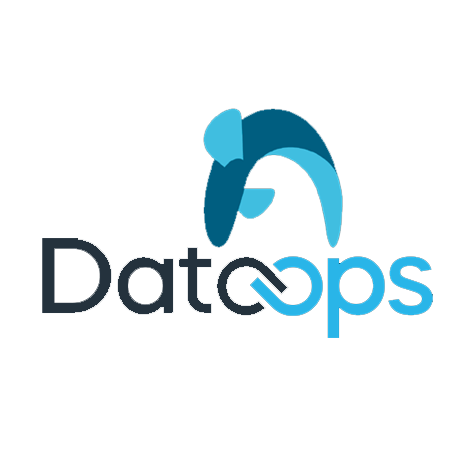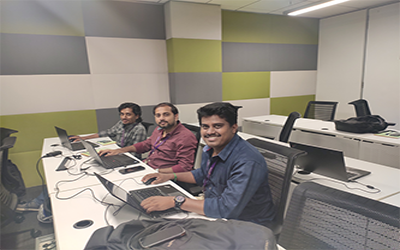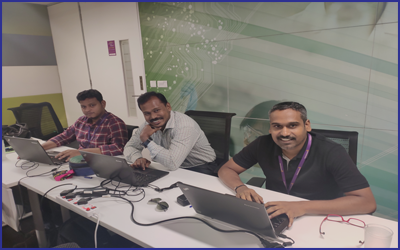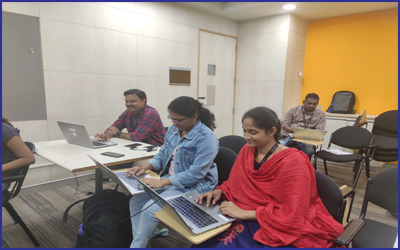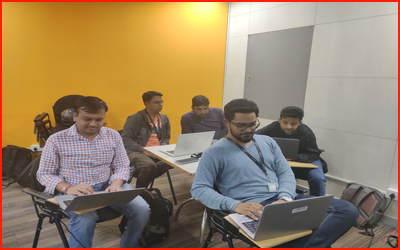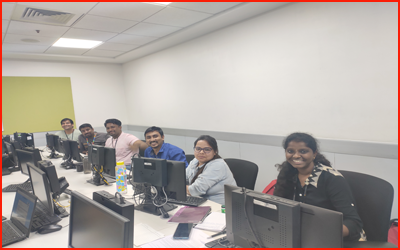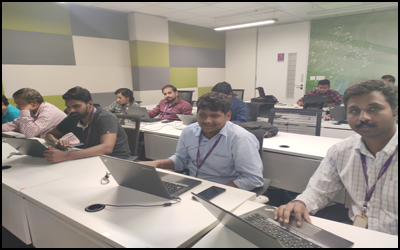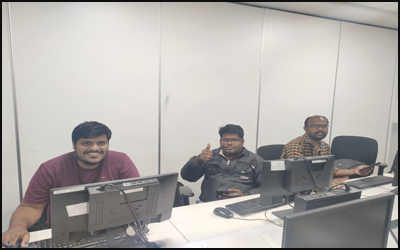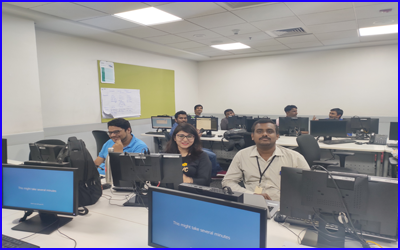About
AIOps Certified Professional (AOCP)
Machine learning and AIOps are the newest buzzwords in the production environment. They're the newest artificial intelligence craze, a new approach to create clever apps, and they're frequently more hype than substance.
AIOps is a new software approach that focuses on three essential ideas to reduce the complexity of software failures:
- Identifying the Issue
- Prediction of the Task
- Execution of the Task
Machine learning is used by 57 percent of enterprises, while artificial intelligence is used by 86 percent, according to data provided by ISVs. Why? Because AI and machine learning have profoundly altered how businesses view their computers, applications, and data, forcing them to rethink how they operate. Application owners must optimize workflows to process data with intelligent analysis to gain insight into the system in order to achieve these efficiencies.
You'll also need AI and machine learning to understand user and customer needs in order to create software that understands what customers want and the need to develop and deploy such software more quickly. The term AIOps has received a lot of attention. "AI for IT" is a term that is frequently used to describe it. Unfortunately, the majority of those discussing the term have no idea what it means.

-
Objectives
AIOps' main goal is to use machine learning and reinforcement learning to extract insights from IT infrastructure, and then use cognitive automation to act on those insights.
-
Prerequisites
The unfettered flow of data from diverse technologies into the big data repository is the core feature for AIOps. As a result, you must evaluate the convenience and frequency with which you can extract data from your IT systems. Streaming is the best approach since it allows you to transfer data in real time.
AIOps?
What is AIOps?
Artificial intelligence in IT operations is referred to as AIOps. It has become critical for monitoring and controlling hybrid, dynamic, distributed, and componentized IT settings. AIOps enables IT Ops and DevOps teams to work smarter and faster by analysing IT data algorithmically, allowing them to detect and handle digital-service issues earlier, before business operations and consumers are harmed.
Ops teams may use AIOps to control the enormous complexity and volume of data created by modern IT infrastructures, preventing outages, maintaining uptime, and achieving continuous service assurance.
AIOps allows enterprises to function at the speed that modern business demands by putting IT at the centre of digital transformation efforts.
Benefits
What are the Benefits of AIOps?
The key advantage of implementing AIOps is that it provides Ops teams with the speed and agility they require to assure crucial service availability and create an excellent digital customer experience. Owing to rigid rules-based processes, the emergence of silos due to specialisation, and, most importantly, too much-repeated manual effort, it's been difficult for Ops pros to do this. More information on the advantages of AIOps are given here:
- AIOps eliminates noise and distractions, allowing busy IT professionals to focus on what matters most rather than being distracted by unnecessary alerts. This reduces the time it takes to detect and resolve service-impacting issues, as well as the number of interruptions that negatively impact sales and the customer experience.
- AIOps eliminates silos by correlating data from different sources and providing a comprehensive, contextualized view of the complete IT environment – infrastructure, network, applications, and storage – both on-premises and in the cloud.
- AIOps shortens diagnosis and resolution periods for end customers by promoting seamless cross-team communication between diverse professionals and service owners.
- Advanced machine learning collects important data in the background and makes it available in context to better future situation handling.
- The methods for handling reoccurring events can be automated via knowledge recycling and root cause identification, bringing Ops teams closer to a ticketless and self-healing environment.
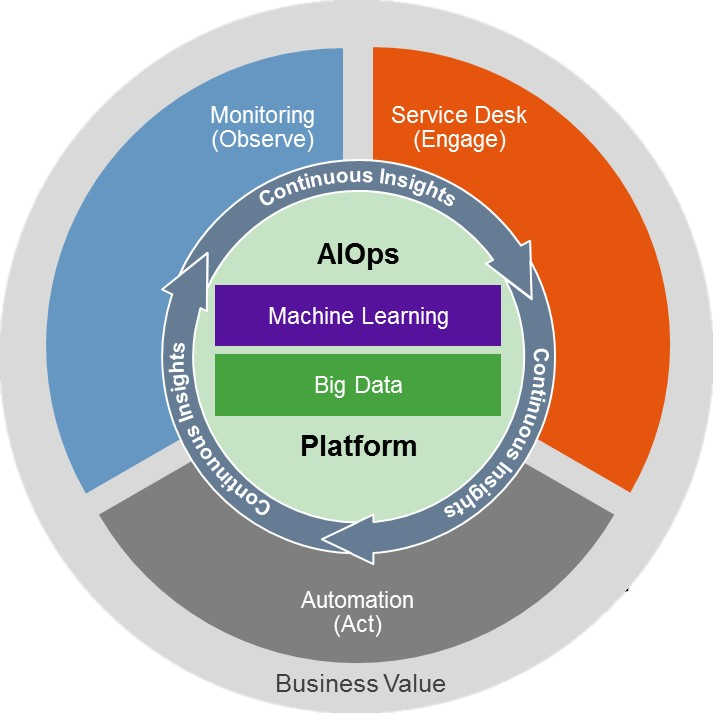
AIOps has already begun to drive digital transformation by improving how IT operations teams communicate with other stakeholders. Applications will become much more sophisticated in the future, necessitating greater automation and cooperation. As a result, successful IT strategies will be inextricably linked to these solutions and approaches.
The AIOps journey is never completely over, just as DevOps is never truly over. Every implementation is different, but they always include gradual development and improvement of the platforms' capabilities. It's critical to remember the progressive nature of AIOps if you want to get the most out of it and make sure you don't stop before your plan reaches its full potential.
Team
Meet Our Mentors & Regents
200+ years of industry experience bringing in core strengths and industry network

Rajesg kumar
DevOps Princial Architect & Co-founder, Cotocus.
Capt. Augustine Joseph
CEO, Jetexe
Shubhanshu Srivastava
Co-Founder at GoScale Technologies
John Mandel
SVP & Executive Board Member, Happiest Minds Technologies.F.A.Q
Frequently Asked Questions
-
What is the purpose of AIOps?
AIOps collects and analyses data to make sophisticated automated judgments. It can forecast likely future events that may impair availability and performance using this data, and even proactively remedy them before they become a problem.
-
What can AIOps do for you?
AIOps, for example, gives IT employees visibility into performance data and dependencies across all environments, analyses the data to extract critical events related to slowdowns or failures, and automatically informs IT personnel to problems, their main causes, and possible fixes.
-
What are some of the benefits of implementing AIOps?
Using AIOps to turn IT operations into a service-oriented paradigm can result in a range of real-world benefits, such as better customer insight, cost reduction, risk reduction, and a more responsive IT organization.
-
What issues does AIOps address?
Improve performance monitoring and service delivery—AIOps estimates resource use and predicts performance issues. Using probable cause analytics, it focuses on the most likely source of an issue. Using clustering and anomaly detection, it aids in identifying the underlying issues that cause events.
-
What role does AIOps play in the future of IT operations?
By putting all forms of data under one roof, AIOps removes data silos in IT. The obtained data is then utilized to run a Machine Learning algorithm to generate insights that enable for quick improvements and adjustments.
-
What do AIOps tools entail?
Artificial intelligence for IT operations (AIOps) tools have recently been a popular issue. These technologies are critical for proper administration as distributed systems get larger, more difficult to administer, and, in general, become more complex with microservices designs.
-
What Are the Most Important Requirements for a Successful Solution?
Teams can use AI-based algorithms to detect potential issues that could compromise service levels, execute automated analysis, and swiftly run effective remediation across a variety of hybrid, multi-cloud systems using AIOps platforms. The key requirements for creating successful capabilities are as follows.
-
How do you get started with AIOps?
Enterprise IT teams have a lot of options when it comes to establishing their implementations, including whether to use commercial products or build their own capabilities utilising open-source technology. There are three important pillars for a successful AIOps deployment, regardless of whatever approach is used:
- Create a cohesive, all-encompassing data lake. It's critical to create a data lake that can absorb and store a diverse assortment of data sources and types. Topological data, alarm metrics, log files, configuration management databases, and more should all be supported by platforms. These various and dissimilar data sets must be standardized and correlated.
- Make use of the appropriate algorithms. There's no need for teams to reinvent the wheel. The truth is that the algorithms required have been around for a while. Knowing which algorithm to apply at what time is crucial.
- Make sure you ask the proper questions. Having the correct questions in mind throughout the process is crucial, as is ensuring that the platform provides the intelligence required to answer the queries that matter. What's the best blend of on-premises and cloud resources? What kind of workloads should be transferred to the cloud? How are problems recognized and avoided before they cause a disruption for users? Effective implementations can provide valuable insights into these and other areas.

